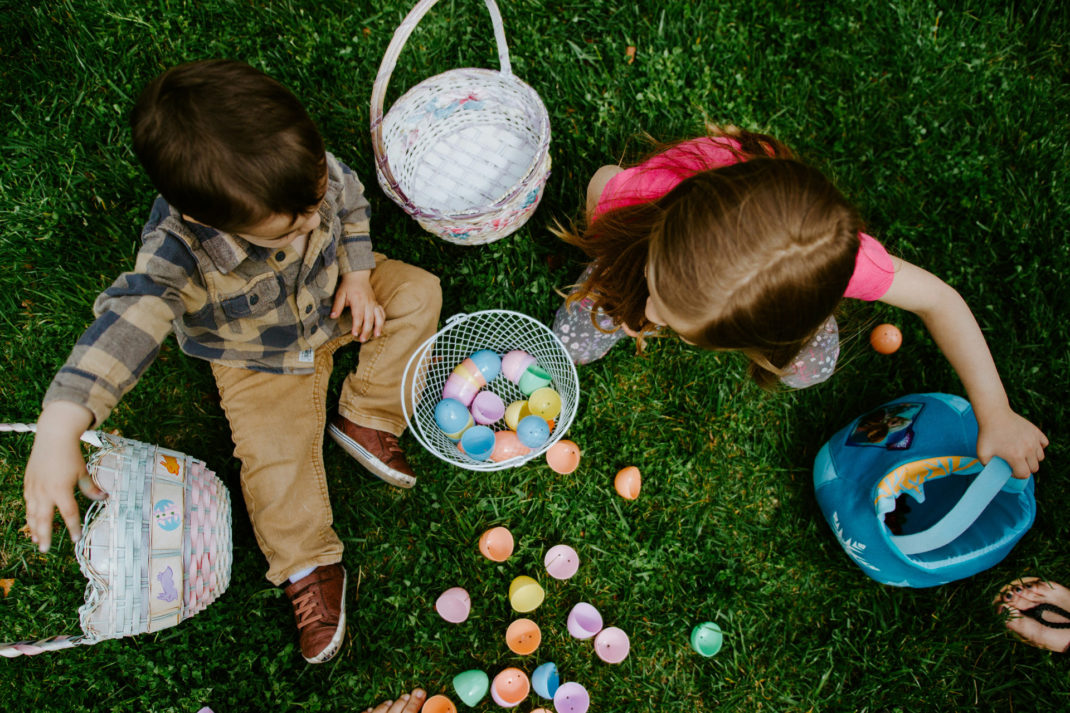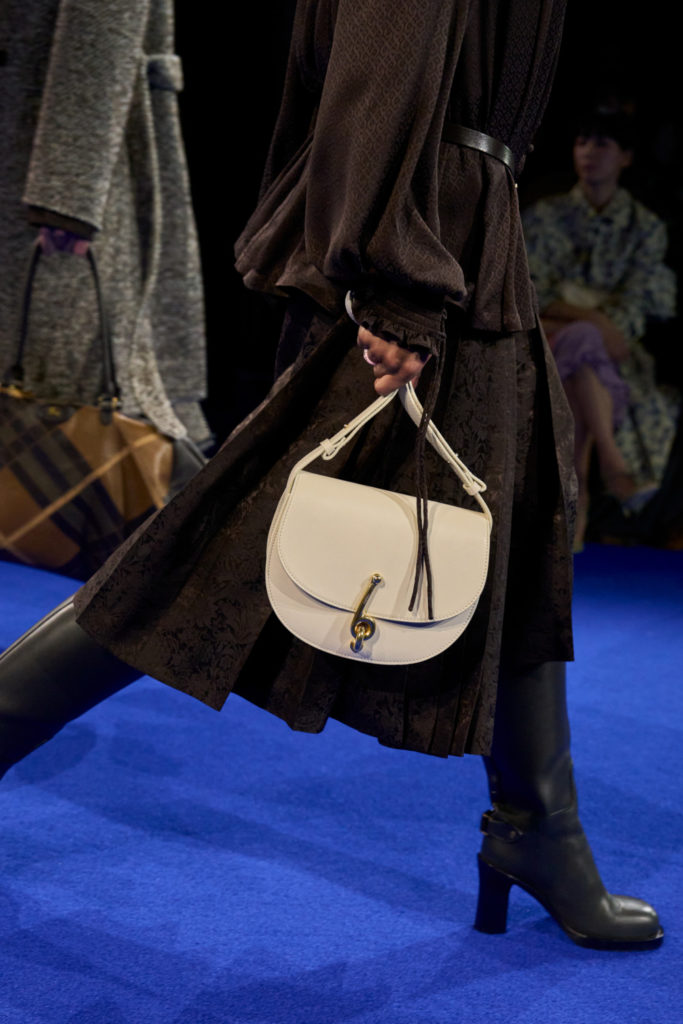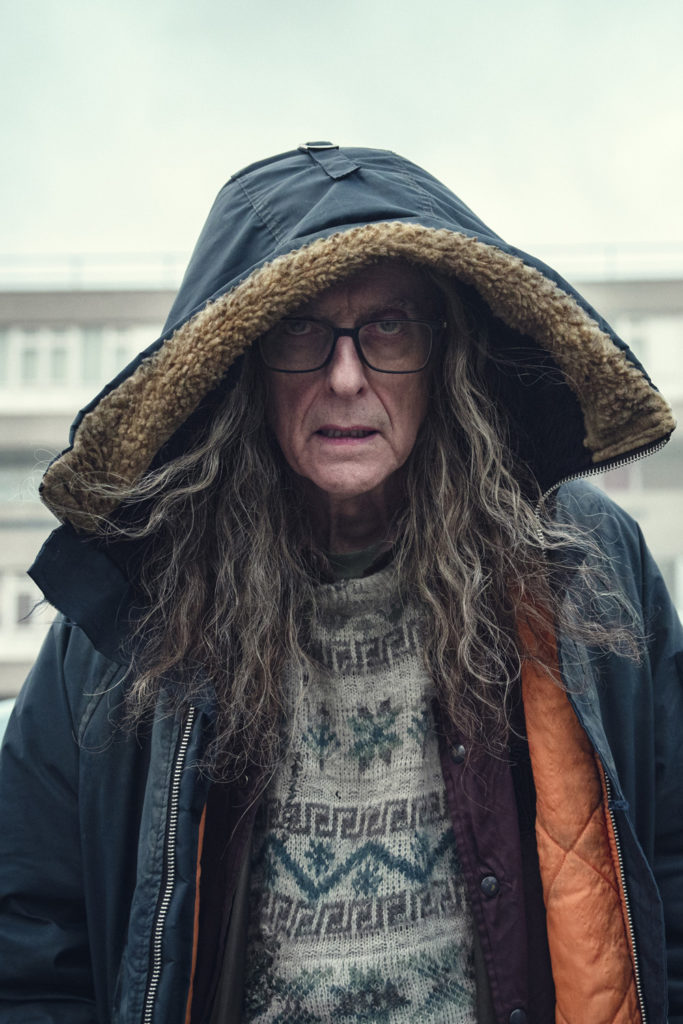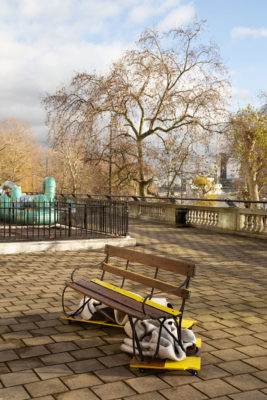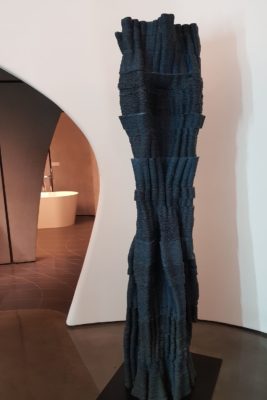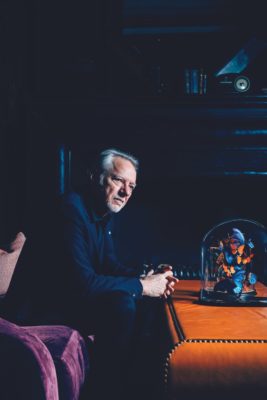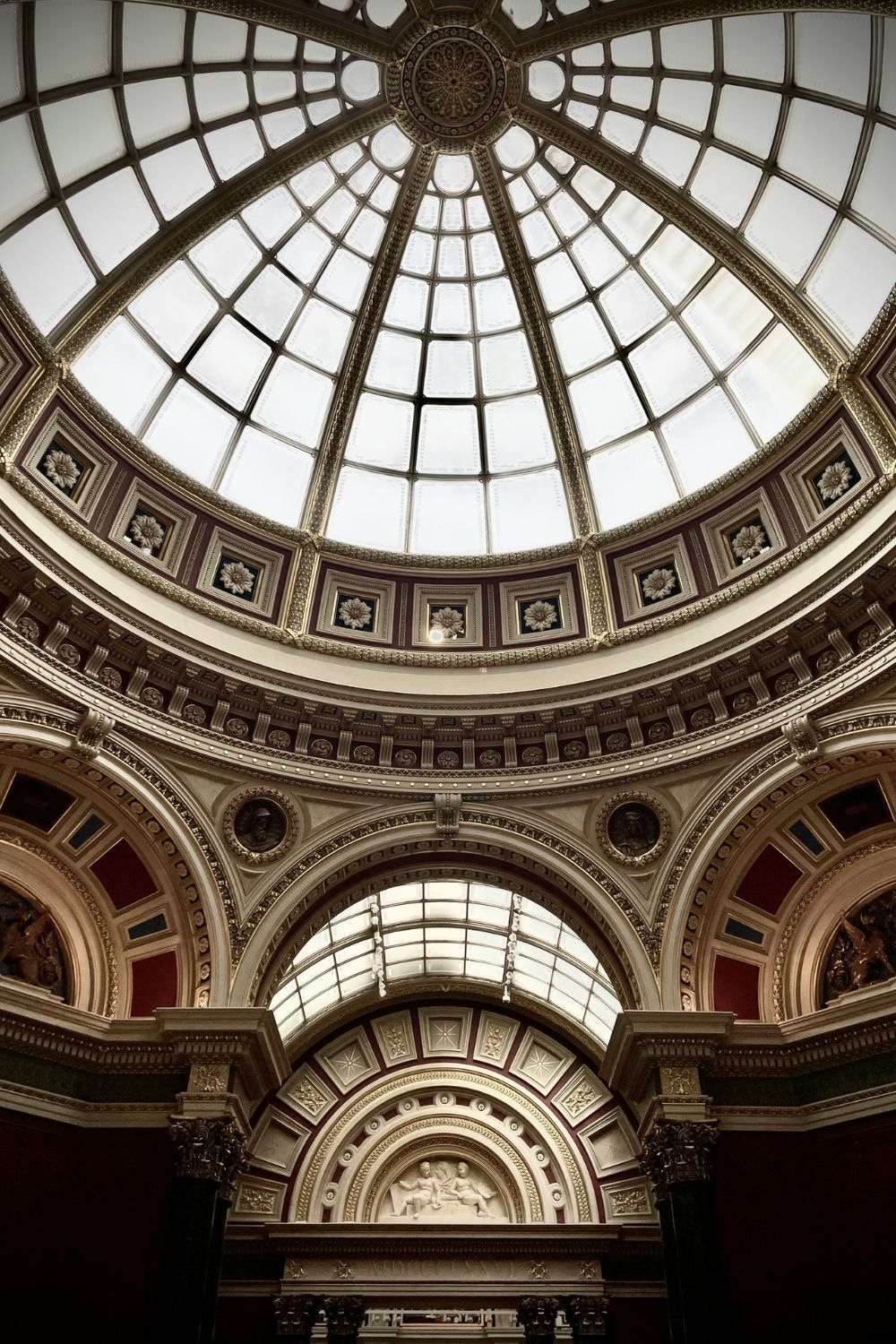
Inside The National Gallery’s Bicentennial Exhibition
By
7 months ago
A national art odyssey
Victoria Elvidge delves into the National Gallery’s National Treasures exhibition, which sees 12 of the museum’s most iconic pieces displayed at galleries across the UK.
National Treasures At The National Gallery – Review
There are now 12 mugs proudly arranged on my kitchen shelf; each one was collected in the last six weeks. They come, literally, from all corners of the UK: Birmingham, Belfast, Brighton, Bristol, Cambridge, Oxford, Leicester, York, Newcastle, Edinburgh, Aberystwyth and Liverpool. My favourites are the beautifully crafted grey espresso cup from the ceramics shop at York Art Gallery and the fine porcelain Belleek mug with shamrocks on from the Ulster Gallery.
The National Gallery is celebrating 200 years by lending 12 of its most iconic treasures to regional galleries. The idea is that a five-star work (Vermeer, Wilton Diptych) will be within an hour’s reach of most people in the UK. I frequently go to galleries abroad but realised when I looked at the list that there were many I had never visited. I don’t work in the art world – I’m a lapsed lawyer, now involved in social housing and landlord and tenant engagement. But I’ve always loved art (well nearly always – I remember. aged seven, being told by my mother that I could have an ice cream as long as I admired the Rose Window in Chartres Cathedral first – I still think cup or cone when I look at stained glass). So I decided to travel to see each of the treasures as they are now displayed in their temporary homes. The mugs are the souvenirs I collected.
View this post on Instagram
And in case you are thinking that this was my version of Walking the Great Wall or Climbing Everest without oxygen, let me be clear: this was a frolic of my own. I didn’t ask friends to sponsor me. I just did it, and at my own cost (I booked train tickets way ahead). So. as far as I know. I’m the only person who has travelled this summer to see every single NG painting on loan in situ.
12 galleries and thousands of train miles later I have learnt so much. Not just about the works of art on display, the curators who care for them, the funding and the sponsors but also about the people who visit these galleries. I found myself ranking the loos (a clean welcoming loo can become as highly rated as a Velasquez), cafés (still dreaming of the olive oil and pistachio cake at York Gallery) and the shops.
Brighton museum was lent a perfect self portrait by Rembrandt. Luckily I knew it was there, because otherwise I might easily have gone home none the wiser. It was hidden upstairs, barely advertised outside. A packet of Post It notes accompanied it, on which viewers were asked to write down what they would say to Rembrandt if he was alive.
The Ikon Gallery in Birmingham, by contrast, displayed the Artemesia Gentileschi self portrait stunningly in virtual darkness, with a reflective exhibition of work by the contemporary Irish artist Jesse Jones wrapped around it using mirror image films, opera, and an unravelling curtain showing a serpent eating its tail. I know it sounds lala conceptual, but it was beautiful and illuminating.
York got the water lilies, and boy did they lay it on for the visitors: posters hung everywhere advertising the arrival of Monet. It was a real celebration. There were great loans from other galleries, a plan of Monet’s garden and an interactive table which I loved (and had the punters queueing) – it showed Monet’s picture, and, using two fingers, you could stretch it so that you could see his brush strokes and the empty patches of canvas. Genius. A wildflower meadow has been planted to encourage outdoor painting, and even the pillars of the gallery and its glass frontage were decorated with Monet water lilies.
Liverpool’s Walker Gallery also went all out, draping everything adjacent to the Rokeby Venus with dark pink velvet and interpreting the picture from the perspective of the sitter not the artist. It made you re-evaluate.
Leicester had commissioned an animated film imagining why the little girl with a hoop was included in Renoir’s Umbrellas. I thought it was utterly charming.
View this post on Instagram
Aberystwyth displayed Canaletto’s Stonemason’s Yard at knee (not eye) level. So that people in a wheelchair (and children) could enjoy this busy portrayal of life in Venice. Is this obvious? It’s not something I’ve come across before. Plenty of wheelchair users go to art galleries and presumably go home with a stiff neck. Maybe think about hanging the odd picture lower down?
Belfast (I took a plane, the only exception to the travel by train rule I set myself) had scored a bingo double, by reuniting Caravaggio’s Supper at Emmaus with its original stable mate The Delivery of Christ, lent by the National Gallery of Ireland in Dublin. This one needed no embellishment. We all stared in rapt silence.
The 12 works of art were of course glorious, but I also explored the galleries holistically, first reflecting on, for instance, layout and lighting. All of these galleries are old and seriously underfunded, but some achieved an art experience for the 21st century, despite the obstacles. Whether this is through strong local support or great directors is not always clear. We want clear but unpatronizing labelling, an idea of how the works have been ordered. But while an art expert would travel to see a work no matter how funereal the setting, most of us want a bit of an outing and a positive experience.
The people who worked in the galleries were welcoming and helpful, but the galleries had very different ways of deploying them. Aberystwyth had an enthusiastic volunteer in charge of the exhibit. Liverpool shared all the roles within the team. So the two who had led the illuminating hour long ‘highlights’ tour were, two hours later, doing their shop stint. It made all the staff seem fully invested and made for a particularly warm atmosphere.
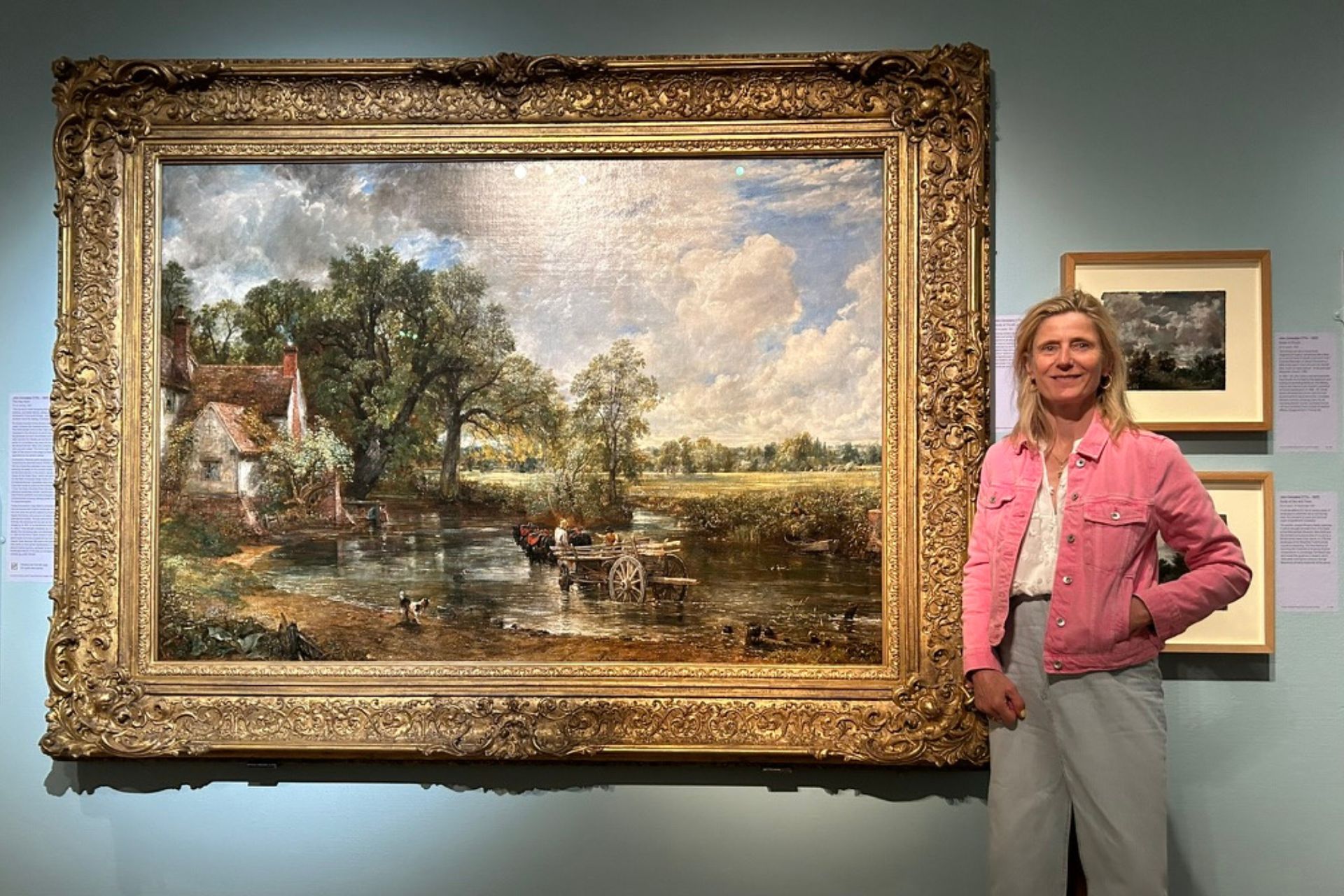
I visited most of the galleries alone, which meant I had a better chance to hear the chat – and I relished the uplifting conversations overheard. Newcastle and York in particular had nailed the ‘art is for everyone’ message. Those around me were definitely not middle class arty types – they were ordinary explorers on a day out. Edinburgh felt like tourists. The Ikon was a young crowd, queuing to get in.
Most of the galleries either bent over backwards (in addition to their education programmes) for children (often alienating those without) or offered little (cue bored toddlers). Some had such high quality displays (the snake exhibition at Leicester, the natural history story of Ireland at the Ulster Museum) that both children and adults alike were gripped. But the York gallery had created a generous and inviting area for very small children, equipped with tempting stuffed toys, huge sofas, thick rug right in the middle of its principal room of pictures. It worked brilliantly, and everyone was happy.
In terms of cafés, I know it’s a question of money (again). But the breadth of quality in the cup of coffee, slice of quiche or flapjack on offer was astonishing. Unsurprisingly the galleries that got it right were full. The others were like morgues.
I also noted the loos– there is no excuse for grotty loos; a clean loo is a must. And in the context of running a large gallery the cost is minimal.
When it comes to shops, why is so much tat on sale? No one will get home and remember nostalgically their trip to a gallery if they’ve brought back an expensive bar of chocolate with the gallery’s name on it. York had a superb ceramics shop of local studio pottery adjacent to their ceramics collection. I bought half my Christmas presents there. ‘Does it do well?’ I asked, given that the price pitch was higher than many. ‘Very well indeed’ was the answer.
A last discovery for me was the provision of audio guides for the visually impaired. They are brilliant. If you find your concentration flagging (and I saw a huge number of works in six weeks) but don’t want to feel you haven’t done a great picture justice, tune in to one of these on your phone. They are meticulous and for me doubled the enjoyment. More of them, please.
I haven’t walked barefoot across a desert. But I feel I have run a marathon of sorts. Art is better when you have a focus. That’s why we love an exhibition. I loved curating my own tour. But for me the impact of my trip has been much greater than just seeing hundreds of works of art. It has been about observing why I enjoy looking at art, and what enhances that.
For more information, visit nationalgallery.org.uk

